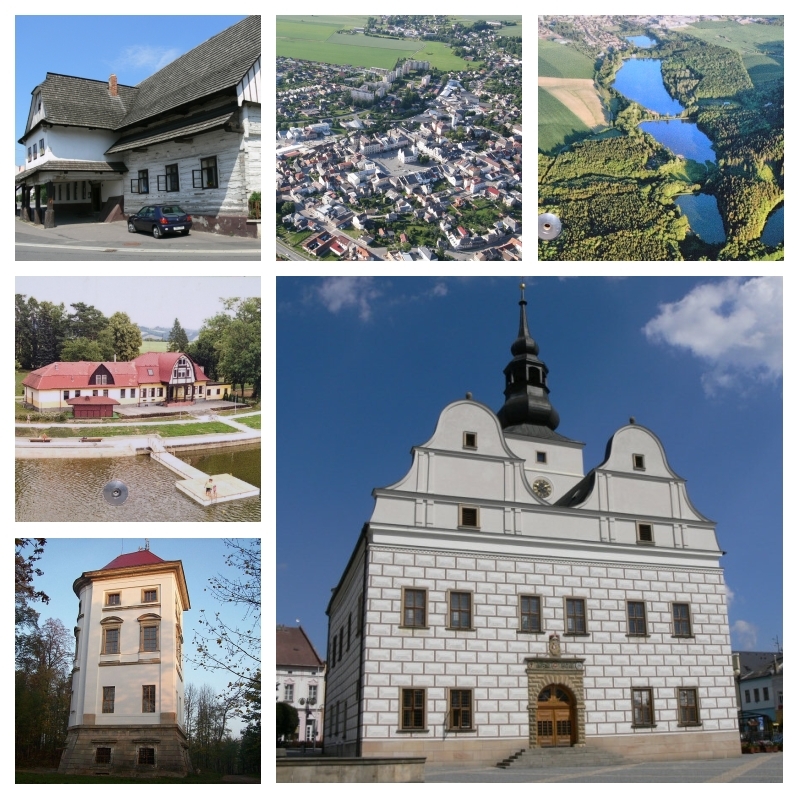THE CITY OF LANSKROUN
-
* The town *

Image - / From top left to right / * Timbered tavern * An aerial view of the city centre * The Lanskroun Ponds * Dlouhy pond is a natural swimming * New Chateau near Lanskroun * The Renaissance town hall *
Location:
Lanskroun lies in the Lanskroun Basin under the southernmost foothills of the Eagle Mountains at 49°55‘ north latitude and 16°37‘ east longitude, 380 metres above sea level.
Origin of the Town (up to the 1300’s):
The first preserved written mention of Lanškroun dates back to 1285, when Záviš of Falkenštejn took it over from the Czech king Václav II.
From 1304 Lanskroun was part of the property of the Zbraslav Monastery, later the Bishopric of Litomyšl (1358). In 1371 Petr Jelito, Bishop of Litomyšl and a native of Dolní Třešňovec near Lanškroun, founded an Augustinian monastery in the town, which was rebuilt into a chateau in the Renaissance style.
In 1246, Heřman and Oldřich of Drnholec, royal colonizers, founded the castle of Lanšperk and the town of Lanškroun. Obviously the town was founded to be a principal economical centre of the large demesne of Lanšperk. Later on the town passed over to the royal power, and in 1285, in the reign of Wenceslas II, into the possession of the mighty Záviš of Falkenstein. After the Falkenstein’s execution Wenceslas II gave the town of Lanškroun to the newly founded Cistercian monastery in Zbraslav near Prague (about 1292). However, the long distance did not allow the monastery to administrate the town well and in 1358 the monastery gave the town to the newly founded bishopric in Litomyšl in exchange for possessions near Prague.
After the Hussite wars in the 15th century, Lanškroun was acquired by the Kostkas of Postupice. From 1507 the town was ruled by the Pernštejn family, except for thirteen years when the town was administered by the Lords of Boskovice. During the reign of the Lords of Postupice and then the Pernštejn family, Lanškroun gained a number of important privileges. The next owners of the town and estate were the Hrzáns of Harasov and after the Battle of Bílá Hora (1620) Lanškroun fell to the Liechtensteins (from 1622).
-
* Presentation *
Presentation of the city of Lanskroun - The spoken word :
Interview in English / length of the call 13,04 minutes. »
Video on YouTube / length of the call 13,04 minutes. »
Panoramic photo of Lanškroun Ponds, Lanškroun city, Municipal Office and L'Art Multifunctional Center:
-
* The Sights *
Historical sights and places of interest »Document in PDF
Slow down and get to know Lanskroun »Document in PDF
Nature and tourist spots » Document in PDF
- * Present day *